The Samsung Galaxy S6 and S6 edge Review
by Joshua Ho on April 17, 2015 9:00 AM EST- Posted in
- Smartphones
- Samsung
- Mobile
- Galaxy S6
- Galaxy S6 Edge
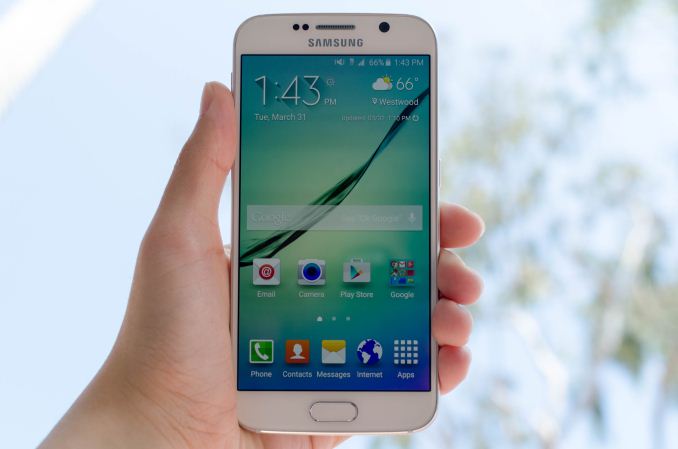
As recently as the Galaxy S5, Samsung had a fundamentally different strategy from companies like HTC and Apple. While design wasn’t ignored completely, Samsung Mobile had a different set of priorities. In general, it felt like Samsung wanted the phone to have every feature possible to please every possible potential customer. Features like a removable battery and microSD card slot seemed to be a crucial point of differentiation. TouchWiz focused on delivering a full suite of applications even if they were pretty much redundant when compared to Google’s applications. Samsung also seemed to cost-optimize their external shells, favoring polymer builds over glass or aluminum. Since the Galaxy S, this strategy paid off handsomely. With the help of strong marketing, Samsung proceeded to dominate the Android market from the days of the Galaxy S2, to the point that almost no other Android OEM was relevant in terms of market share.
However, Samsung’s tried and true strategy failed with the Galaxy S5. Fundamentally, Samsung had always been competing with Apple and their iPhone line-up at the high end, but Samsung consistently held a price advantage. The real problem was the rise of low-cost flagship phones, which squeezed Samsung significantly. Other OEMs were able to justify their high-end pricing by delivering a polished software experience and premium hardware design. In comparison to these relatively cheap phones which delivered largely the same experience and hardware, Samsung’s sales crumbled and the Galaxy S5 didn’t meet sales expectations.
This brings us to the Galaxy S6, which is supposed to be Samsung’s attempt at refocusing their product design and lineup. Design has become a major priority, and the Galaxy S6 is a radical departure from previous design in terms of almost every design choice. The Galaxy S6 represents the best that Samsung can make to some extent, as a great deal of the phone is composed of Samsung-made parts to achieve maximum vertical integration as seen in the specs below.
| Samsung Galaxy S5 | Samsung Galaxy S6 | Samsung Galaxy S6 Edge | |
| SoC | MSM8974ACv3 2.45 GHz Snapdragon 801 | Exynos 7420 2.1/1.5GHz A57/A53 | Exynos 7420 2.1/1.5GHz A57/A53 |
| RAM | 2GB LPDDR3 | 3GB LPDDR4-1552 | 3GB LPDDR4-1552 |
| NAND | 16/32GB NAND + microSD | 32/64/128GB NAND | 32/64/128GB NAND |
| Display | 5.1” 1080p SAMOLED HD |
5.1” 1440p SAMOLED |
5.1” 1440p SAMOLED, Dual Edge |
| Network | 2G / 3G / 4G LTE (Qualcomm MDM9x25 UE Category 4 LTE) | 2G / 3G / 4G LTE (Category 6 LTE) | 2G / 3G / 4G LTE (Category 6 LTE) |
| Dimensions | 142 x 72.5 x 8.1 mm, 145 grams | 143.4 x 70.5 x 6.8mm max, 138 grams | 142.1 x 70.1 x 7.0mm max, 132 grams |
| Camera | 16MP (5132 x 2988) Rear Facing with 1.12 µm pixels, 1/2.6" CMOS size, 31 mm (35mm effective), f/2.2 | 16MP (5132 x 2988) Rear Facing w/ OIS, f/1.9, object tracking AF | 16MP (5132 x 2988) Rear Facing w/ OIS, f/1.9, object tracking AF |
| 2MP Front Facing | 5MP Front Facing, f/1.9 | 5MP Front Facing, f/1.9 | |
| Battery | 2800 mAh (10.78 Whr) | 2550 mAh (9.81 Whr) | 2600 mAh (10.01 Whr) |
| OS | Android 4.4 w/TouchWiz |
Android 5 (64-bit) w/TouchWiz | Android 5 (64-bit) w/TouchWiz |
| Connectivity | 802.11a/b/g/n/ac 2x2 + BT 4.0 (BCM4354), USB3.0, GPS/GNSS, MHL, DLNA, NFC |
2x2 802.11a/b/g/n/ac + BT 4.1 (BCM4358), USB2.0, GPS/GNSS, NFC |
2x2 802.11a/b/g/n/ac + BT 4.1 (BCM4358), USB2.0, GPS/GNSS, NFC |
| Wireless Charging | N/A | WPC 1.1 (4.6W) & PMA 1.0 (4.2W) |
WPC 1.1 (4.6W) & PMA 1.0 (4.2W) |
| Fingerprint Sensor | Swipe | Touch | Touch |
| SIM Size | MicroSIM | NanoSIM |
NanoSIM |
Design
There’s a lot of ground to cover in the Galaxy S6 and S6 edge, but probably the most immediate change is to the design. The Galaxy S6 is a unibody design, with no apparent screws. This does mean that there’s no removable battery or microSD slot, which shouldn’t be a problem for most people although this may be enough for some to write off this phone completely.
The back cover is now glass instead of plastic, and is attached to the phone with glue instead of plastic latches. Regardless of color or model, Samsung has placed an extremely fine pattern beneath the glass that manages to be subtle but also surprisingly brilliant under direct light. It’s tasteful in a way that the Galaxy S5 and Note 4 weren’t. The back of the phone also has a single LED flash, a heart rate monitor, and the camera which bulges out significantly. I personally don’t have a problem with camera humps, but the Galaxy S6’s camera hump is probably the biggest I’ve seen in recent memory.
The glass back cover meets the metal frame of the phone, which provides most of the structural rigidity and strength. On the normal Galaxy S6, this frame has a very slight curve and is almost cylindrical along the top and bottom of the phone, but flattens out along the sides for better grip. The bottom of this frame has the speaker, microUSB port, and 3.5mm headphone jack, which does make for some resemblance with Apple products launched within the last year. At any rate, the placement of the speaker, USB port, and 3.5mm jack are all appropriate for a phone.
The left side of the frame contains the volume buttons, which are clicky and solid, although pressing the buttons off-center does produce a noticeable flex. The right side of the frame has the power button and the nanoSIM slot on the normal version.
On the edge variant, the sides of the frame are dramatically thinner and appear to be angled out when compared to the Galaxy S6. In the hand, this makes it feel much thinner than the S6, but it really feels almost too thin to hold comfortably. Combined with the flat back, it’s really a bit of a struggle to pick up the edge off of a table, which compromises usability when compared to the normal S6.
The top of the frame contains the IR LED for TV capabilities and a hole for a microphone. On the edge variant, the nanoSIM slot is relocated to the top of the phone.
The front of the phone is probably the only aspect of the design that feels relatively similar to the Galaxy S5. However, the texture of the bezel beneath the glass is similar to the subtle finish of the back cover, which makes for a unique visual effect that manages to be tasteful and quite unique. Other than this, we see the same layout as most Galaxy phones, with two capacitive buttons (multitasking on the left, back button on the right) and a physical home button. In the case of the Galaxy S6, this home button has been turned into a fingerprint scanner that is touch-based rather than a swipe sensor. Along the top of the front face, we also see the ambient light sensor, a proximity sensor, the earpiece, and the 5MP front-facing camera. Directly below these items is the display driver beneath the bezel, which is similar to the “logo bar” of the One M7, M8, and every other phone on the market today. On the S6 edge, the sides of the display are curved to reduce the width of the phone, which does make it easier to hold in the hand, but there’s really no bezel reduction here as the side bezels seem to be larger than what we see on the S6.
Overall, the design of the Galaxy S6 and S6 edge is really unlike anything else they’ve produced in recent memory. The phone itself is well-sized and feels much more ergonomic than the Galaxy S5 due to the thinner build and mildly reduced bezel size. It really feels like Samsung cared about the design of the phone this generation, and the attention to detail here immediately puts Samsung near the top in this area. The front of the phone still feels a bit derivative, but I suspect that there isn’t much Samsung can do to change this when faced with design constraints like a physical home button. The S6 edge does look better in some ways, but ergonomically the sharper and thinner edge is a compromise compared to the normal S6. Either phone is still easily one of the best-designed phones I’ve seen this year.


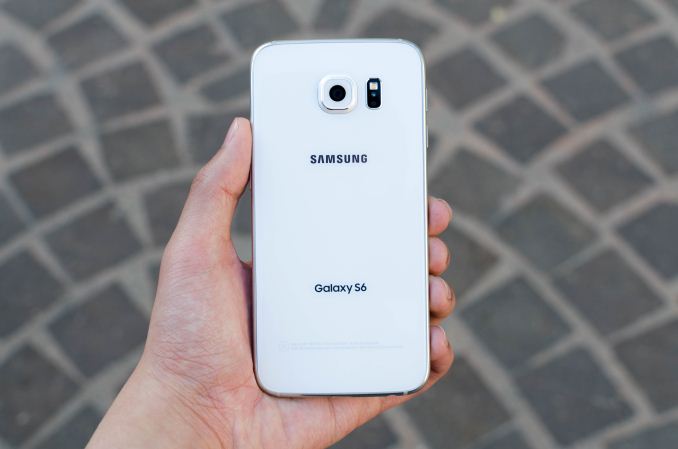
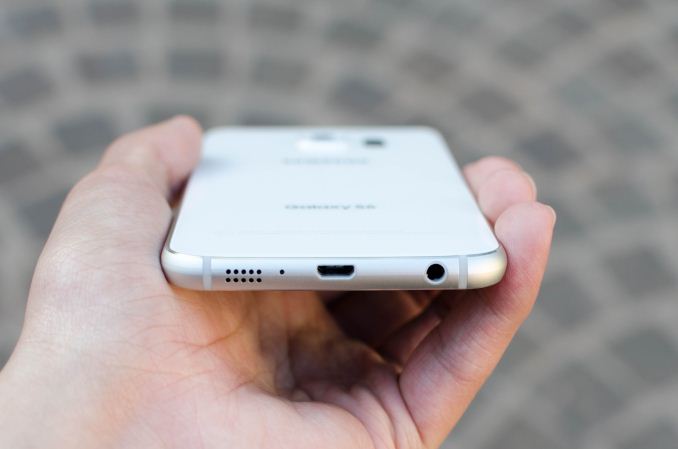
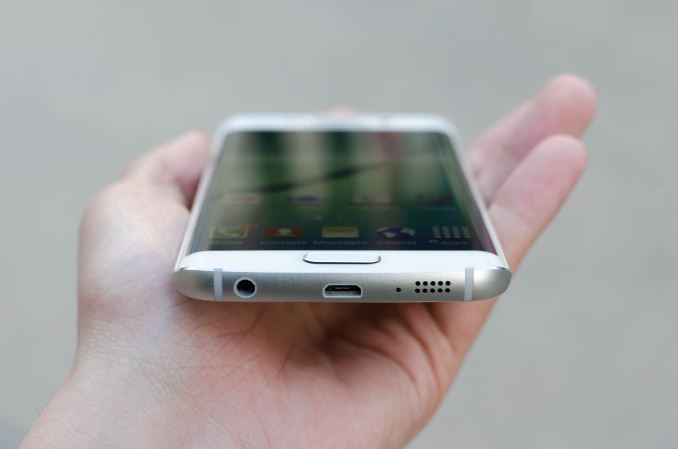



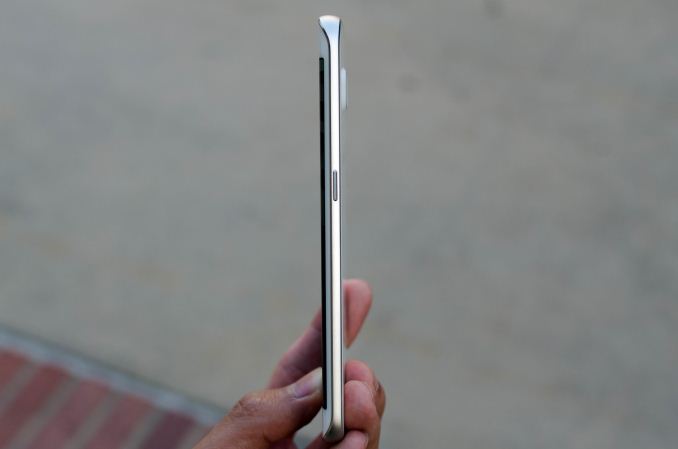

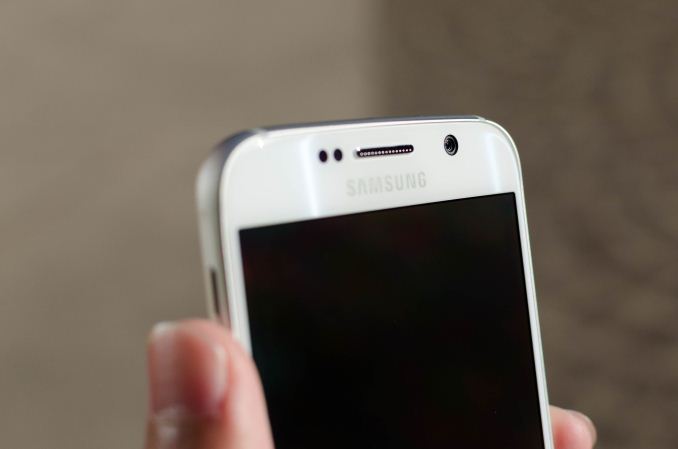
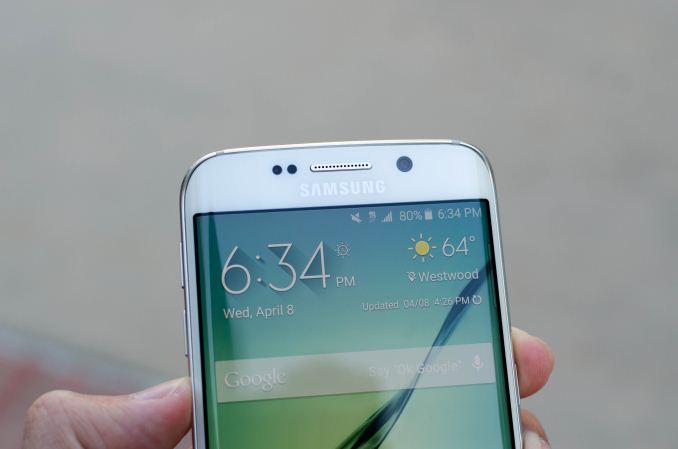








306 Comments
View All Comments
Peichen - Saturday, April 18, 2015 - link
Just get the iPhone 6+ then. I typically get between 8-10 hours of screen-on time on my 6+ divided evenly between LTE and wi-fi. My record is 10hr 23min screen-on over 1day 14hr at 36% Safari, 16% Home screen and 10% Family Guy.GreenMeters - Friday, April 17, 2015 - link
Great, you idiot reviewers have ruined the last good phone easily available in North America. Can you form-over-function morons now leave the tech sites and go write for GQ or Cosmo or whatever? Then maybe in another phone generation or two without your horrible opinions clouding all the tech sites, we can once again get an awesome pocket computer instead of shiny garbage.gnx - Friday, April 17, 2015 - link
I feel for ya. I was pretty sure Samsung, always mindful of its home market South Korea and the preponderance of those Korean users needing swappable batteries there, would ensure removable battery (if not removable SD card) .... boy, was I wrong ...Drumsticks - Friday, April 17, 2015 - link
LG G4 should have removable and microSD.phoenix_rizzen - Friday, April 17, 2015 - link
Most likely it will depend on market, same as the LG G3 and LG G2 before it.Solandri - Friday, April 17, 2015 - link
Reviewer (male) says "there was zero benefit to the edge display". Try carrying your phone around in a purse, and you will see a huge benefit to the edge display - checking notifications and seeing who is calling without having to pull the phone out of your purse.LifesABeta - Friday, April 17, 2015 - link
Nice that you guys were at my university(UCLA) to conduct these tests :DRyan Smith - Friday, April 17, 2015 - link
It's a good place. We leave Josh in their care when he isn't writing fantastic phone reviews for us. =Phalcyonmax - Friday, April 17, 2015 - link
Samsung has come out with a well rounded device this year.Good design,good hardware and acceptable software.Personally i'm impressed with samsung's cutting edge SoC .The exynos 7420 is by far the best SoC out there,clearly ahead of the snapdragon 810.The exynos maintains higher clock speeds over extended workloads while keeping power consumption and temperature in check.The GPU does lag behind in the on screen performance but that has to to do with the 2560x1440 resolution.
Samsung's innovation would have been much more prominent if they had kept the screen resolution down.
The lack of sd card and removable battery support are those aspects of the device which have the potential of making it or breaking it for a number of consumers.Personally i have no issues with a non removable battery since i'm a casual user however for hardcore gamers or power users who charge their devices at least twice a day,they inevitably would have to face the hardship of getting their device's battery replaced at some point after about a year's usage.I'm acceptant of samsung's decision to do without the sd-slot.It could be a serious let down for some but after the restriction of kitkat 4.4( for security reasons) its just difficult to move data to the sd card.My last two sd cards got corrupted and i have lost my data on sd card more than once(maybe just my carelessness).I'm happy samsung are providing wider storage options for consumers with varying storage needs.
After the disappointments of my previous samsung devices i've stayed away from anything samsung, however i'm looking forward to getting this device.
phoenix_rizzen - Friday, April 17, 2015 - link
The S6 is roughly 2 mm thinner than the S5 and yet the camera sticks out ... roughly 2 mm? Would it have been so hard to made the phone the same thickness as the S5 and make the camera flush with the body? That would also have added some extra internal volume to keep the battery closer to the size of the S5's.Another case of pointless "thinness" spec whoring. :(